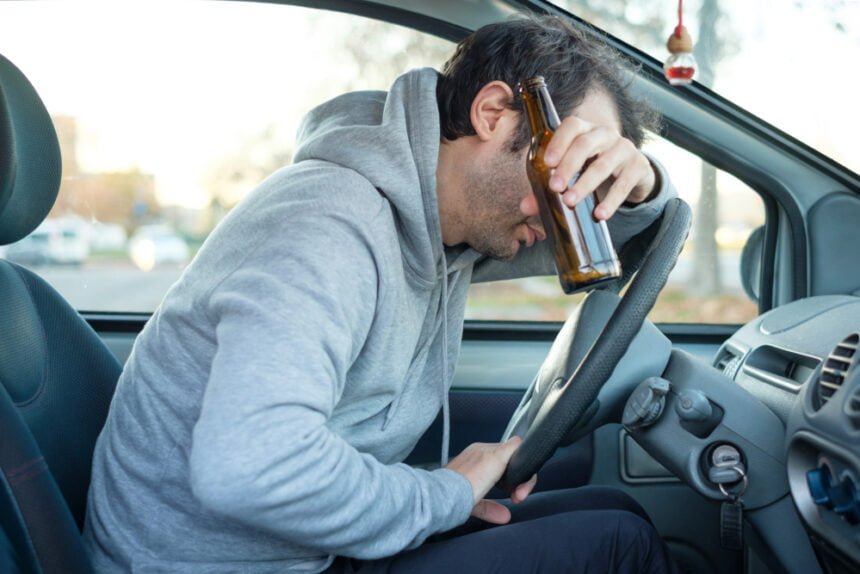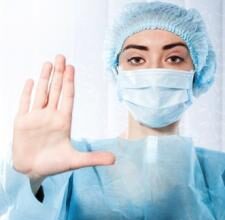Substance abuse is a growing problem that affects countless people. According to one estimate, of the 140 million people that use alcohol, around 20% meet the criteria for alcohol addiction. This means that 28 million people in the United States are alcoholics, which is almost one in ten people in the country.
Of course, people have other addictions as well. The bad news is that these addictions are common causes of traffic accidents. A new study shows they are worse than we thought, which underscores the importance of getting addiction treatment.
New Study Shows Addiction is a Leading Cause of Traffic Accidents
In December, the National Highway Traffic Safety Administration published a report showing drugs and alcohol addiction plays a serious role in accidents. The results were even more significant than we originally thought.
According to the study, more than half of the people involved in road accidents had drugs or alcohol in their system
More than 55% of people involved in serious or fatal traffic accidents tested positive for drugs or alcohol, according to a new study. Impaired driving is one of the leading causes of death in traffic accidents in the United States. Alcohol and drugs can significantly impair reaction speed, thinking skills, and orientation on the road. According to the US Centers for Disease Control and Prevention, 29 people die every day in car accidents involving drunk drivers.
If you have a similar situation, it is important to promptly seek qualified help from drug defense lawyers, and experienced specialists who have legal knowledge in these cases for your effective protection. It is not known for sure how many people died in road accidents involving drug-intoxicated drivers. Researchers in a new study they conducted tried to expand knowledge about road safety, looking not only at drivers. A study published this week by the US Highway Traffic Safety Administration looked at information about passengers, bicyclists, electric scooter drivers, and pedestrians involved in traffic accidents. The study found that a quarter of serious or fatal crashes involved people who tested positive for drugs and alcohol at the time of the crash. Approximately 11% tested positive for some type of stimulant, such as cocaine or methamphetamine, and 9% had opioids in their system. In 32% of fatal cases and 18% of serious injuries suffered by road accident participants, more than one narcotic drug was found in their bodies. When you are aware of the severe injuries people can endure after a traffic accident, you begin to appreciate the need to get appropriate treatment.
This means that using a combination of substances such as marijuana and alcohol can lead to more serious injuries and more fatal traffic accidents than using either substance alone, especially among young drivers. Researchers say it’s important to note that the presence of a substance in a person’s body does not mean that the person has certain diseases. The results cannot be generalized across the country, but such indicators are statistical averages collected in numerous trauma centers in both urban and rural areas. A large number of tests conducted after a traffic accident are positive for alcohol and drugs. A large percentage of people have a positive result on these tests, which suggests that it is necessary to actively continue working on various measures to solve the problem of preventing the use of alcohol and drugs while driving a car.
A national study found that more than 40% of people who use alcohol or marijuana occasionally drive while intoxicated, putting not only themselves and other drivers on the road at risk, but also the many pedestrians who can be injured as a result of an accident committed by a driver who drives a car in an intoxicated state. Pedestrian accident attorneys protect the rights of pedestrians and provide all necessary, qualified assistance to protect their rights and obtain compensation from the violator.
Accidents involving pedestrians are especially tragic because they are 100% preventable. There are no reasons or excuses for driving under the influence of alcohol or drugs. Drinking alcohol or other drugs while driving is an illegal phenomenon, which is strictly punished by current legislation. More than 10,000 people die each year in the United States due to driver errors. This rate has been declining for several years but has gradually increased during the Covid-19 pandemic.
Consequences of drunk driving
The risk of an accident for a drunk driver is much higher. Drunk driving is a crime. However, alcohol-related accidents are not limited to drunk driving. This also applies to drunken pedestrians and cyclists. Most drunk driving deaths occur on weekends. Alcohol significantly impairs the ability to drive a car and the ability to think correctly and react in time to the situation on the road, it also increases the risk of accidents. Typical accidents involving drunk drivers include oncoming vehicles and head-on collisions with them. The consequences of such accidents can always be serious.
Many people suffer from alcoholism and drug addiction. Here are some details to be aware of:
- Road accidents involving a drunk drivers occur mainly in the evening and at night.
- Statistics show that summer and early autumn are the most dangerous times.
- Driving at high speeds and not wearing seat belts are the main causes of death for drivers and passengers.
- Wearing a seat belt can save many victims from death, even if they are driving drunk.
- Drunk driving is a problem for young drivers, but the typical drunk driver on the road is a man between the ages of 30 and 50.
- Inexperienced drivers are more affected by alcohol than experienced drivers. The inexperience of young drivers increases their risk.
- Alcohol strongly affects driving skills, which are not yet sufficiently developed. Alcohol can impair the ability to drive more than usual in older adults and even in those who rarely drink alcohol.
- The simultaneous use of alcohol and drugs can have unpredictable effects on the ability to drive. The overall effect is usually stronger than when alcohol and drugs are taken separately.
- The drug gradually disappears from the body and its effect is no longer felt, but the use of even a small amount of alcohol can lead to unpredictable consequences.
The time it takes to finish the beer before you can get behind the wheel of the car can have a huge effect on impairment. Beer is the most common low-alcohol drink, so it is extremely important to correctly calculate the period of its elimination from the body. Narcologists claim that a 0.5-liter bottle of beer is completely excreted from the body within two to three hours. A liter of beer evaporates in approximately five hours, you will need to wait seven hours to completely remove 1.5 liters.
The time it takes to expel vodka to be able to get behind the wheel of a car is higher than beer. Vodka manifests itself ambiguously when establishing the level of intoxication. According to experts, after drinking 100 ml, the level of alcohol in the blood is about 0.8 ppm. After drinking the next 100 ml, the blood alcohol level is about 0.2 ppm, the next 150 ml will show 2.75 ppm of alcohol in the blood. Such unusual indicators are because vodka, like any other strong alcoholic beverage, first reacts in the stomach, after which it is absorbed into the blood. The time it takes to drink cognac and whiskey before you can get behind the wheel of a car. Lovers of cognac and whiskey should know that the principle of their effect on the body is similar to the use of vodka. Due to the presence of impurities, the period of complete cleansing of the body from cognac and whiskey lasts approximately 10% longer than from the effects of vodka. The time it takes for the wine to drain before you can get behind the wheel of a car. The time required to eliminate 100 ml of wine is 1.5 hours, an average person needs about seven hours to eliminate 0.5 liters of weak wine, and eleven hours are needed to completely cleanse the body from one bottle of wine (700 ml).
How can alcohol be removed from the human body faster?
All drivers who are wondering how to quickly remove alcohol from the body to get behind the wheel should correctly understand that no medication can immediately cleanse your body of the effects of alcoholic beverages and significantly reduce blood sugar levels. In no case should you get behind the wheel after consuming alcoholic beverages or narcotic substances. If you drank something made of alcohol, you should get behind the wheel no earlier than a day later if you want to be absolutely safe. Call a taxi or ask a friend to drive you home. Most methods of removing alcohol from the blood only contribute to the removal of the most obvious symptoms of intoxication. The main concept in the process of getting sober is only time.
Avoid coffee and fatty foods
Some products should not be combined with alcohol (alcoholic drinks together with energy drinks). Caffeine neutralizes the effect of alcohol and creates the illusion of sobriety. Fatty food is a real challenge for the liver, which additionally has to digest alcohol. This forces your liver to metabolize the alcohol for a longer time, making the hangover process even more serious. The amount of alcohol consumed and the use of various types of narcotic substances have a catastrophic effect on the behavior of a person behind the wheel, so driving a car in such conditions should be avoided because it can lead to tragedy.
Alcohol and drug addiction is the key cause of most traffic accidents, which are caused by the irresponsible behavior of drivers who allow themselves to get behind the wheel while intoxicated. The use of alcoholic beverages and narcotic substances is connected with the fact that the driver loses the ability to correctly perceive the events around him and react in time to the appearance of a threat to traffic safety. Current legislation provides for several penalties for driving while intoxicated and under the influence of drugs that slow down the speed of reaction, but unfortunately, the statistics have not improved. Alcohol or drugs are taken to enter the bloodstream and are transported to other parts of the body, all of which slow down the reactions that go to the brain. The negative effect of alcohol on the brain is due to a decrease in oxygen access to neurons (structural and functional units of the nervous system) during alcohol intoxication. At the same time, the following external symptoms of brain damage from consumed alcohol or narcotic substances of various types may be observed:
A conditional lesion that suppresses human reflexes.
Complex movements are performed much slower than usual, which disrupts coordination and makes it difficult to control actions.
Since inhibitory processes have priority over stimulating processes occurring in the central nervous system, reaction time to environmental events increases significantly.
Sensory perception decreases.
Attention decreases significantly and memory deteriorates.
Thinking and orientation processes may be disturbed, self-criticism often decreases, and events are not evaluated realistically. We often overestimate our abilities when we consume alcoholic beverages and various drugs.
The driver’s reaction time is significantly slower than when sober, which can be critical on the road when driving a car.
Now let’s talk a little about the effect of drugs on the human body. People who regularly use drugs create the neurochemical mechanisms of psychosis in their brains. At the same time, the main function of the brain, which reflects reality, may be disturbed, and so-called hallucinations may occur. For example, after using drugs, a person can see objects that are not there or hear words that no one speaks. Drug addiction leads to complications of perception, loss of attention and concentration, the ability to correctly judge and evaluate situations, forgetfulness, psychosis, increased irritability, concentration disorders, anxiety, and panic attacks. The combination of these factors leads to irreversible consequences of driving while intoxicated.








